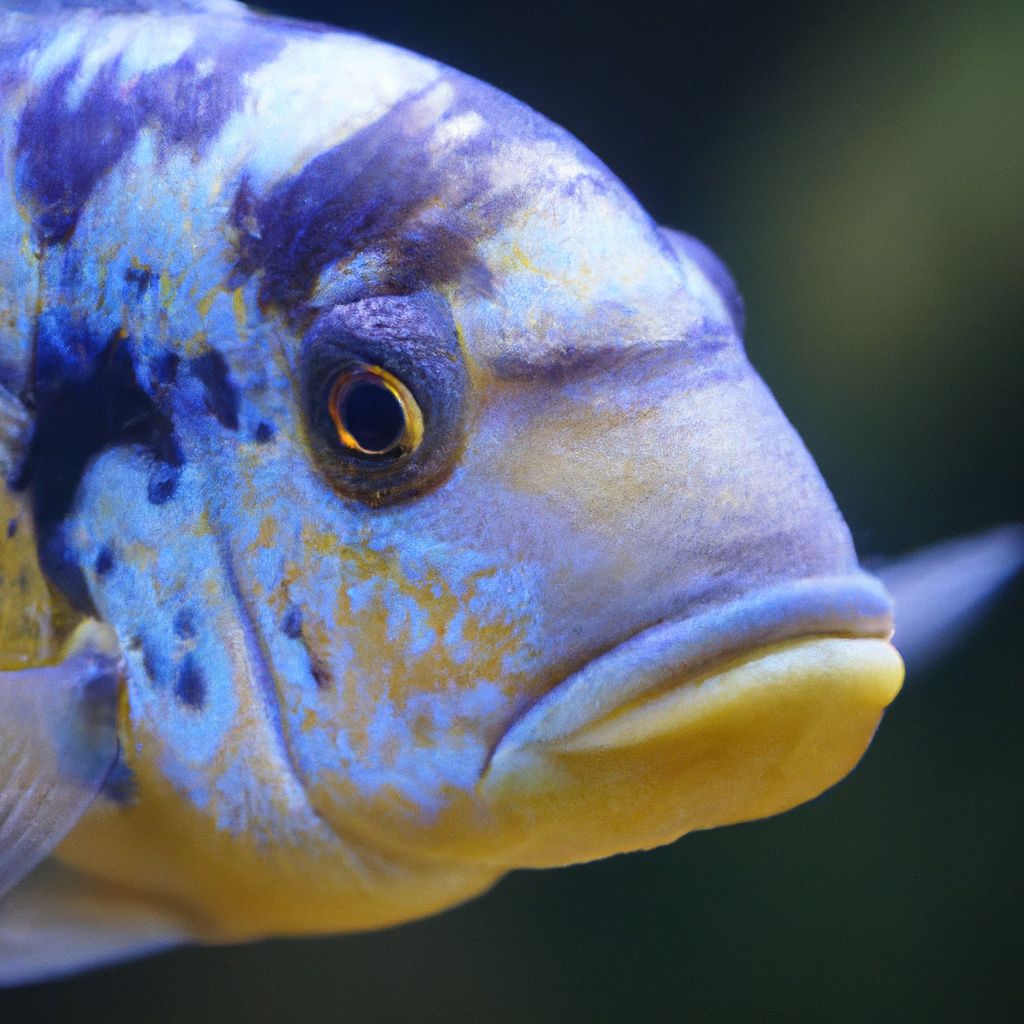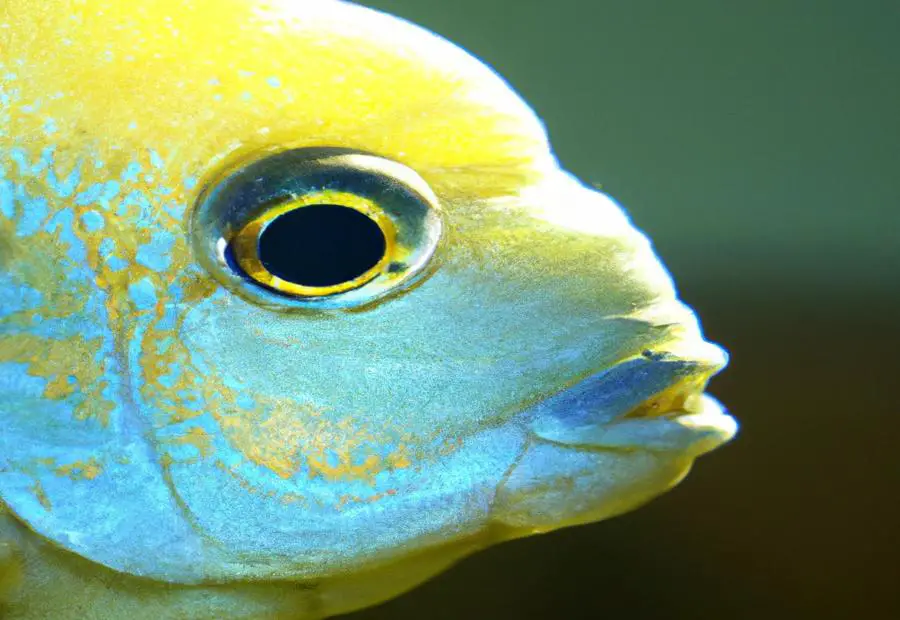Last Updated on 2 years by admin

Cichlids are a diverse group of fish known for their vibrant colors and unique behaviors. If you have a cichlid and are wondering about its age, there are several factors to consider. In this article, we will provide an introduction to cichlids, explore the factors that can affect their age, and discuss methods to determine the age of your cichlid. We will also highlight common signs that can indicate the age of a cichlid. By understanding these aspects, you can gain insights into the age and life stage of your cichlid and provide appropriate care accordingly.
Key takeaway:
- Cichlids’ age can be determined through various methods: Size and growth patterns, scale examination, fin ray counts, and otolith examination are some of the techniques used to estimate the age of a cichlid.
- Factors affecting the age of a cichlid include growth rate, species-specific characteristics, and environmental factors. These factors contribute to variations in the lifespan of different cichlid species.
- Common signs indicating the age of a cichlid include the size and condition of its scales, the growth patterns of its fins, and the examination of its otoliths, which are calcium carbonate structures found in the fish’s ears.
Factors Affecting Cichlid Age

Photo Credits: Bettafishworld.Com by Christopher Scott
Cichlids, those fascinating creatures in our fish tanks, have intrigued us with their longevity.
In this section, we’ll dive into the factors that play a role in determining the age of our beloved cichlids.
From their growth rate to the unique characteristics of different species, and the ever-important influence of environmental factors – we’ll uncover the secrets behind the age of these captivating aquatic beings.
Get ready to discover the key elements that shape the lifespan of your cichlids!
Growth Rate
The growth rate of cichlids is influenced by various factors, including their diet, environment, and genetics. Understanding the growth rate is essential for determining the age of a cichlid.
Here is a table that highlights the growth rate of different types of cichlids:
| Type of Cichlid | Growth Rate |
| African Cichlids | Varies between species, but generally fast-growing. Can reach full size within 1-2 years. |
| South American Cichlids | Relatively slower growth rate compared to African cichlids. It may take 2-3 years to reach full size. |
| Central American Cichlids | Varies between species, but generally have a moderate growth rate. Can take around 2-4 years to reach maturity. |
It’s important to note that these growth rates can still vary within each species due to individual factors such as diet and care. Providing a nutritious diet, maintaining water quality, and creating a suitable environment can help optimize the growth rate of your cichlid. Regular monitoring of their growth patterns and consulting a veterinarian or experienced cichlid keeper can provide insights into the specific growth rate of your cichlid.
Species-Specific Characteristics
The age of a cichlid can be determined based on its species-specific characteristics. These species-specific characteristics can vary greatly between different types of cichlids, providing valuable information about their age.
| Characteristic | Age Indication |
| Coloration | Younger cichlids often have less developed and vibrant colors compared to older ones. As they age, their coloration becomes more intense and defined. |
| Size | Cichlids generally experience growth throughout their lives. By comparing the size of a cichlid to the average size range for its species, you can estimate its age. |
| Fins | The condition and development of a cichlid’s fins can indicate their age. Older cichlids tend to have more fully developed and well-shaped fins compared to younger ones. |
| Behavior | As cichlids age, they may exhibit changes in behavior. This can include displaying dominant behaviors, establishing territories, or engaging in breeding activities. |
By observing these species-specific characteristics, cichlid enthusiasts can gain insights into the age of their fish without relying solely on invasive methods like scale or otolith examination. It is important to note that these indicators can vary depending on the species and individual cichlid, so multiple factors should be considered to get a more accurate estimate of their age.
Environmental Factors
Environmental factors are crucial in determining the age of a cichlid. Water temperature and quality play a significant role in their growth and development. It is essential to maintain specific temperature ranges, such as 75-80°F, to ensure that cichlids thrive. Fluctuations outside of these ranges can hinder their growth and lifespan. Additionally, the water chemistry and pH levels also impact their overall health and longevity. Therefore, it is important to maintain stable and suitable water conditions for the cichlids to age gracefully.
Another environmental factor that affects the age of cichlids is the availability of hiding spots. Providing ample hiding spots, such as rocks or caves, mimics their natural habitat and reduces stress levels. Stress can negatively impact their growth and lifespan, which is why a well-structured tank environment with hiding spots is beneficial.
To highlight the significance of these environmental factors, let’s consider the true story of a cichlid enthusiast. After implementing a few simple changes, such as keeping the water temperature within the recommended range, maintaining optimal water quality, and adding plenty of hiding spots in the tank, the enthusiast noticed a significant improvement in the lifespan of his fish. As a result, his cichlids thrived, showing increased growth and longer lifespans compared to previous generations.
Methods to Determine the Age of a Cichlid
Curious about how to determine the age of your cichlid? Look no further!
In this section, we will uncover various methods that can help you estimate the age of your beloved fishy friend. From observing size and growth patterns to examining scales, fin rays, and even otoliths, we’ll explore intriguing ways to unravel the mystery of your cichlid’s age.
Get ready for a fin-tastic journey into the world of cichlid age determination!
Size and Growth Patterns
| Size and Growth Patterns |
|
Cichlids exhibit a wide range of size and growth patterns. |
|
Some species of cichlids can grow up to 12 inches in length, while others may only reach a maximum of 4 inches. |
|
The growth rate of cichlids is influenced by various factors such as genetics, diet, and environmental conditions. |
|
Generally, cichlids experience a rapid growth phase during their juvenile stage, with growth rates ranging from 1-2 inches per month. |
|
As cichlids mature, their growth rate slows down, and they reach their maximum size within a few years. |
|
Some cichlid species exhibit continuous growth throughout their lives, while others have a defined growth limit. |
Did you know that the largest cichlid species, the African giant cichlid, can reach lengths of over 2 feet and weigh up to 10 pounds? It’s truly remarkable how diverse cichlids are in terms of their size and growth patterns.
Scale Examination
To determine the age of a cichlid, scale examination is a crucial method. Here are some important points to consider:
- Scale growth rings: Like tree rings, cichlid scales can develop growth rings that indicate their age. By examining the number and spacing of these growth rings, it is possible to estimate the age of the cichlid through scale examination.
- Scale size: As cichlids grow, their scales also increase in size. By measuring the size of the scales, especially those from specific areas of the body, it is possible to assess the age of the cichlid using scale examination.
- Scale coloration: The coloration and pigmentation of scales can change as a cichlid ages. Darker or lighter scales may indicate different stages of growth and can provide valuable insights into the age of the cichlid during scale examination.
- Scale patterns: In addition to size and color, the patterns and markings on a cichlid’s scales can also provide clues about its age. These patterns may become more distinct or fade over time, allowing for age estimation through scale examination.
Fin Ray Counts
Fin ray counts are a significant and dependable method for estimating the age of a cichlid. By carefully observing and counting the number of fin rays on specific fins like the dorsal fin or anal fin, it is possible to estimate the age of the fish.
To illustrate, a table showcasing fin ray counts for various cichlid species might appear like this:
| Species | Dorsal Fin Ray Counts | Anal Fin Ray Counts |
|---|---|---|
| Species A | 14-18 | 8-12 |
| Species B | 10-14 | 6-10 |
| Species C | 16-20 | 12-16 |
It is essential to recognize that fin ray counts can vary within a species due to various genetic factors and environmental influences. Therefore, it is crucial to consider the range provided in the table for each species.
To estimate the age of a cichlid using fin ray counts, you need to carefully observe the fish and count the number of fin rays on the aforementioned fins. Then, compare the obtained counts to the ranges provided in the table to estimate the age of the fish.
However, it is important to note that using fin ray counts alone is not sufficient. It is recommended to utilize other methods such as analyzing the size and growth patterns, examining the scales, and studying the otoliths to obtain a more accurate estimate of a cichlid’s age.
Otolith Examination
The age of a cichlid can be determined through the process of otolith examination.
Otoliths, which are small calcified structures found in the ears of cichlids, grow in layers over time. These unique structures can provide valuable information about the age of the fish.
During the otolith examination, skilled individuals carefully extract the otoliths from the cichlid’s skull. These extracted otoliths are then properly cleaned and polished to enhance visibility. Subsequently, a microscopic analysis is conducted to count the growth rings present on the otoliths. Each ring found on the otolith represents one year in the cichlid’s life.
This particular method is especially beneficial when determining the age of older cichlids that may have ceased growing. By thoroughly examining the otoliths, researchers are able to accurately estimate the fish’s age and gain valuable insights into their growth patterns and life history.
It is crucial to note that otolith examination necessitates the use of specialized equipment and the expertise of experienced scientists or researchers. Therefore, this examination process typically takes place within a laboratory setting.
Common Signs Indicating Cichlid Age
A variety of common signs can be used to determine the age of cichlids, including coloration, size, behavior, and reproductive capabilities.
- Coloration is a key indicator of cichlid age. Young cichlids often exhibit duller colors, which become more vibrant and intense as they mature.
- Size is another important factor in determining cichlid age. Different cichlid species grow at varying rates, depending on their environment. By comparing the size of your cichlid to the average size for its species, you can make an estimation of its age.
- Behavior can also provide insights into cichlid age. Young cichlids tend to be more active and exploratory, while older cichlids may become less active and prefer to stay within their own territory.
- Reproductive capabilities can indicate the age of a cichlid as well. Cichlids reach sexual maturity at different ages depending on their species. If your cichlid is exhibiting signs of spawning or has successfully reproduced, it is likely to be older.
Some Facts About How Old Is My Cichlid:
- ✅ The growth rate of cichlids varies depending on the species, with some species growing faster than others. (Source: vivopets.com)
- ✅ Most cichlids reach their full size within 1-1.5 years, although some species may take longer. (Source: vivopets.com)
- ✅ African Cichlids come in a variety of species, each varying in size. (Source: aquariumnexus.com)
- ✅ On average, African Cichlids grow to be between 2 and 8 inches in length. (Source: aquariumnexus.com)
- ✅ The largest African Cichlid species, the Emperor Cichlid, can reach up to 20 inches in size. (Source: aquariumnexus.com)
Frequently Asked Questions
How old Is my cichlid based on its size?
It is difficult to accurately determine the age of a cichlid based solely on its size. However, growth charts and size comparison with other cichlids can provide estimates.
What are some popular cichlids and their sizes?
Here are some popular cichlid species and their respective sizes:
– Neolamprologus similis: 1.4-1.8 inches
– Maingano Cichlid: 3 inches
– Aurora Cichlid: 4 inches
– Brown Julie Cichlid: 4.3 inches
– Yellow Lab Cichlid: 4-5 inches
– Auratus Cichlid: 4-5 inches
– Peacock Cichlid: 6 inches
How can I speed up the growth of my cichlid?
To speed up the growth of your cichlid, provide a balanced diet with the right amount of protein and fat, avoid overfeeding, maintain good water quality, and manage stress and illness.
What size tank is suitable for my cichlid?
The tank size for a cichlid depends on its species. Smaller cichlids like Neolamprologus brevis can be housed in a 10-gallon tank, while larger species like Emperor Cichlid require a very large tank due to their size.
Can I keep a Jack Dempsey cichlid in a 70-gallon tank?
Yes, a 70-gallon tank would be suitable for a Jack Dempsey cichlid. However, it is important to consider other factors such as tank mates and the specific needs of the fish.
What are the suitable living conditions for a cichlid?
Cichlids thrive in well-maintained tanks with appropriate water temperature, pH levels, and substrate. They also require feeding with a balanced diet and a stress-free environment.
